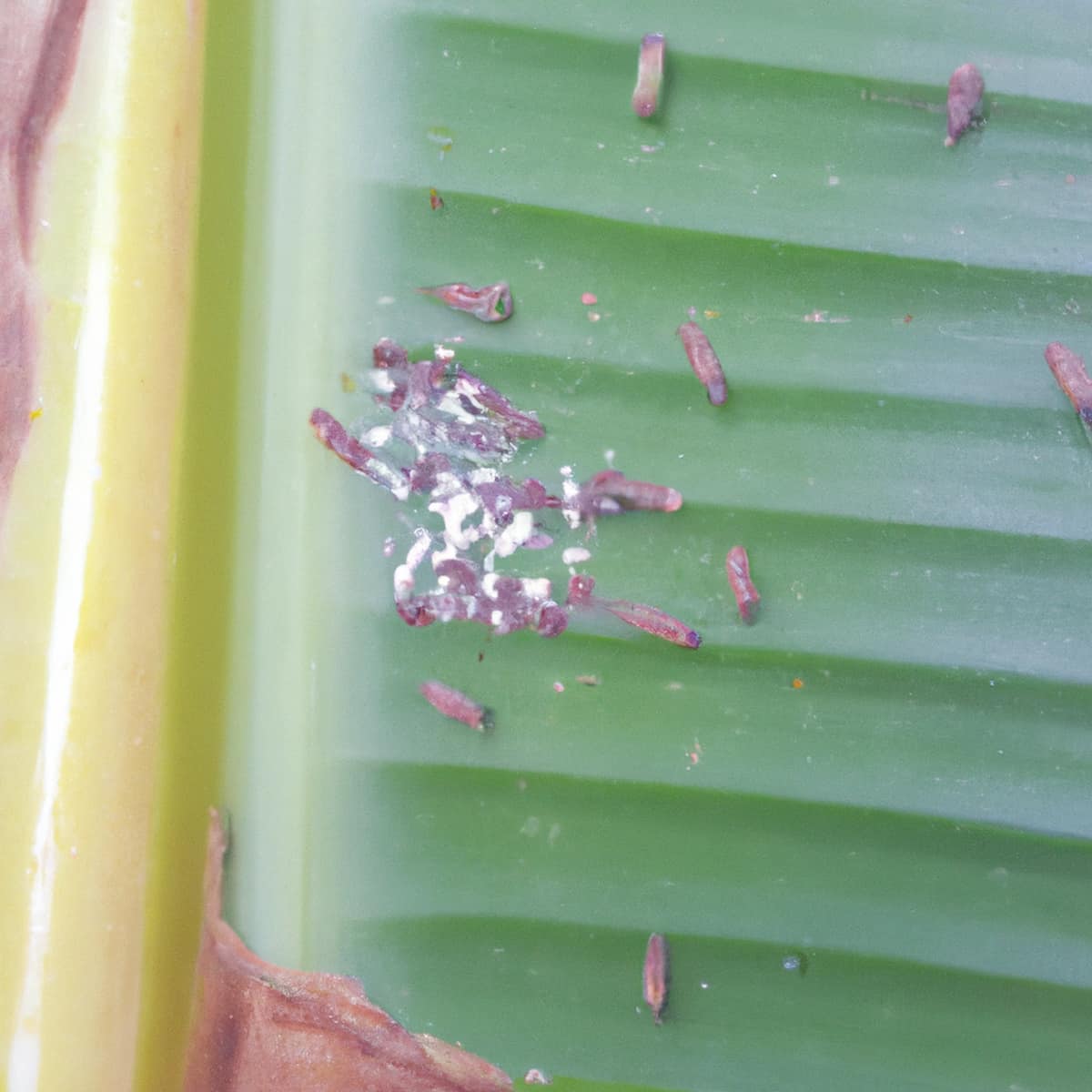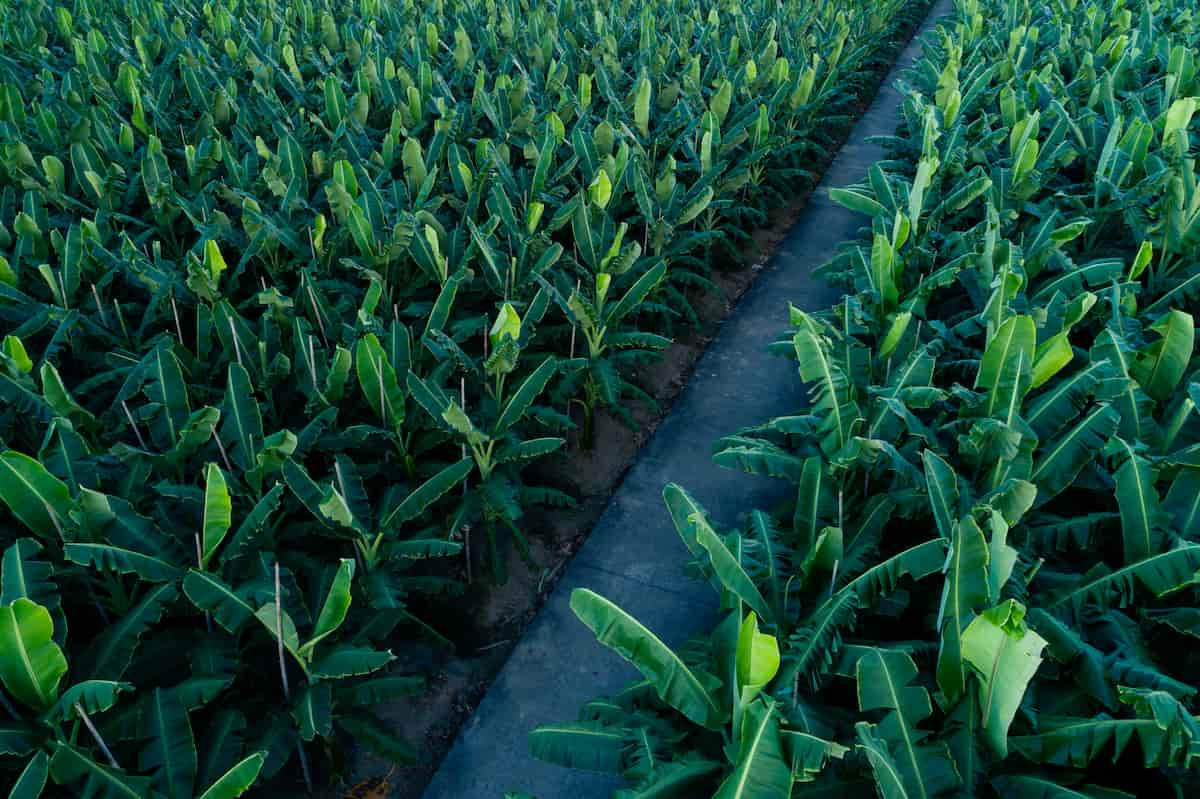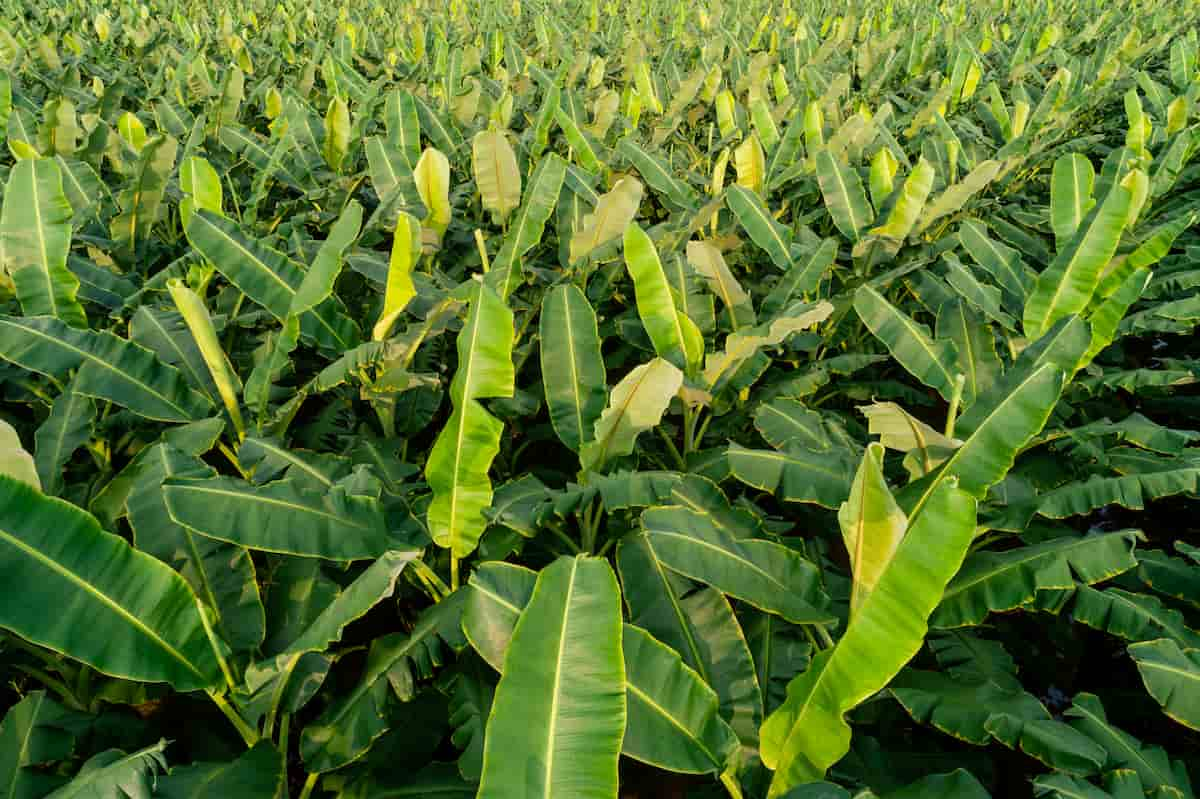The Banana Hard Scale Pest, Aspidiotus destructor, belonging to the Family Diaspididae of the Order Hemiptera, is an armored-scale insect that feeds on the sap of banana plants, causing significant yield losses and reducing the quality of the fruit. The insect is known to target both the leaves and fruits of the banana plant and can quickly spread from plant to plant, leading to widespread damage across entire plantations.

The scales can also affect the flowering and fruiting of the plant, reducing overall productivity. Effective management strategies incorporating cultural, biological, and chemical control methods are necessary to mitigate its impact on banana production. To effectively manage this pest, it is important to understand its life cycle, its preferred habitats, and the best methods for controlling it. This article will provide an overview and discussion of the Banana Hard Scale Pest in Banana crops, including its symptoms, identification techniques, and control.
Banana Hard Scale Pest Management
Life Cycle of Banana Hard Scale Pest in Banana Crop
The lifecycle begins when the female adult scale insect lays eggs on the surface of banana leaves, fruits, and stems. The eggs hatch into mobile, six-legged larvae that crawl across the plant surface for suitable feeding sites. Once the larvae have found a feeding site, they feed on the plant’s sap. They undergo several molts, growing and developing into the non-mobile, sessile nymphal stage. The nymphs secrete a hard, waxy covering that protects them from predators, environmental conditions, and control measures.
The nymphs undergo further molts as they mature into adult males or females. The males are small and white, with wings that enable them to fly in search of females for mating. They continue to feed on the plant sap, secreting a waxy covering that shields them from external factors. As the females mature, they begin to lay eggs parthenogenetically, completing the lifecycle.
Occurrence of Banana Hard Scale Pest in Banana Crop
- Location of Banana Hard Scale pest: This pest infests Banana crops in India, Africa, Sri Lanka, China, Thailand, Vietnam, Indonesia, the United States, Mexico, Brazil, Colombia, Ecuador, Peru, the Philippines, and Australia.
- Host range: The Banana Hard Scale pest infects crops like Banana, Mango, Papaya, Avocado, Passionfruit, Pineapple, Citrus, and Coconut.
Factors Favoring the Population Increase of Banana Hard Scale Pest in Banana Crop
- The pest thrives in warm and humid conditions. The pest’s development and reproduction rates increase with higher temperatures and humidity.
- Dense plantings provide ideal conditions for the pest to reproduce rapidly and spread quickly.
- Younger banana plants are more vulnerable to pest infestation than older plants.
- The Banana Hard Scale can reproduce continuously throughout the year, and its population can increase rapidly under favorable conditions.
- Infested plant materials and dead and decaying parts in the field will act as breeding grounds for the pest.
Identification of Banana Hard Scale Pest in Banana Crop
- Egg: The eggs are white when laid and turn yellow. They are covered by a sticky, protective coating that helps to keep them attached to the host plant.
- Larva: The larva has six legs, antennae, and bristles.
- Adult: The females are circular, brown, and larger than the males, measuring about 2 mm in diameter.
Damage Symptoms of Banana Hard Scale Pest in Banana Crop
- The presence of black, sooty mold on the banana plants’ leaves, stems, and fruit is the most obvious symptom of pest infestation.
- The mold is caused by the excretion of a sugary honeydew substance which can reduce the plant’s photosynthetic capacity and lead to stunted growth.
- The scales feed on the plant sap and cause the leaves to turn yellow, brown, or black.
- Infested fruit with reduced sugar content can become small, deformed, and discolored.
- The pest blocks the plant’s vascular system, leading to the plant’s wilting and dieback symptoms.
- Infested plants show stunting, reduced fruit size, and quality, and even plant death.
In case you missed it: Banana Rhizome Weevil Pest Management: Symptoms, Treatment, Chemical, Biological, Natural, and Organic Control

Percentage of Yield Loss in Bananas Due to Banana Hard Scale Pest
- In India, the yield losses due to Banana Hard Scale pests are 30%. In Thailand, the percentage of yield loss is 10-50%. In Thailand, it is 50%. In Vietnam, the losses are 70%. In Sri Lanka, the losses are 10-40%. In Indonesia, the losses are 20-70%. In Africa, it is 10-60%. In the United States, it is 40%. In Mexico, it is 20-50%. In Brazil, it is 10-70%. In China, it is 60%.
- In Colombia, the losses are 10-60%. In Ecuador, it is 10-50%. In Peru, it is 50%. In Australia, it is 20-60%. In the Philippines, the yield losses are 10-50%. The Economic Threshold Level (ETL) for the Banana Hard Scale pest is set at 5 to 10% of the fruit surface area covered by scales.
Cultural Control of Banana Hard Scale Pest in Banana Crop
- The rotation of banana crops with other non-host crops can help to break the pest’s life cycle.
- Avoid overwatering the plants, as excess moisture can create a favorable environment for the pest. So, proper drainage is essential to prevent waterlogging.
- Prune the infested parts of the banana plants to remove the breeding sites of the pest. It will also improve air circulation and light penetration, creating an unfavorable environment for the pest.
- Proper fertilization can help to promote healthy plant growth, which in turn can help to reduce the impact of pest infestation.
- Regularly remove and destroy infested plant debris, including leaves, stems, and fruits, as they provide a breeding ground for the pest.
- Planting other crops, such as legumes or flowers, near the banana crop can provide food and shelter for the natural enemies, promoting their population growth and effectiveness.
Biological Control of Banana Hard Scale Pest in Banana Crop
- Predatory insects, such as ladybirds, lacewings, and hoverflies, are natural enemies of the Banana Scale Pest. They feed on the scales, reducing their population and preventing their spread.
- Parasitoids, such as parasitic wasp Aphytis sp. and the encyrtid parasitoid Coccidoxenoides perminutus, lay their eggs on the pest, and the emerging larvae feed on and eventually kill the host.
- The fungi Beauveria bassiana, Metarhizium anisopliae, and Paecilomyces lilacinus infect and kill the Banana Scale Pest.
- The bacterium Bacillus thuringiensis produces toxins harmful to scale insects.
Chemical Control of Banana Hard Scale Pest in Banana Crop
- Spray insecticides on the crops like Chlorpyrifos, Malathion, Abamectin, Bifenazate, Hexythiazox, Imidacloprid, Thiamethoxam, and Diazinon on the foliage to control the pest.
- Care should be taken to apply the insecticide evenly and thoroughly and avoid spraying during high wind or rainfall.
Organic Control of Banana Hard Scale Pest in Banana Crop
- Plant extracts from neem, garlic, cinnamon, ginger, turmeric, and chili can be applied to manage the infestation.
- Mineral oil can be used as a natural pesticide to control the Banana Scale Pest by suffocating the pest and preventing it from breathing.
- Essential oils like tea tree oil will improve the plant’s resistance to pests and diseases, while citrus oil helps to repel pests and improve plant health.
- Soap sprays are natural insecticides that can control Hard Scale by dehydrating them.
Preventive Measures for Control of Banana Hard Scale Pest in Banana Crop
- Planting healthy and resistant cultivars can prevent pest incidence.
- Providing the crop with proper irrigation and fertilization will maintain the health and vigor of the plants, reducing their susceptibility to pest infestations.
- Monitor the crops regularly to identify pest infestation in the early stages to keep it under control.
In case you missed it: Banana Pseudostem Borer Pest Management: Symptoms, Treatment, Chemical, Biological, Natural, and Organic Control

Conclusion
The Banana Hard Scale Pest, Aspidiotus destructor, is a major pest that affects banana crops worldwide, causing significant yield losses. Implementing IPM strategies for Banana Scale Pest management can help minimize the use of chemical pesticides and promote the long-term health and productivity of banana crops. By implementing these measures, growers can reduce the risk of pest infestations, maintain the health and vigor of their crops, and ultimately increase their yield and profitability.
- Natural Solutions for Pest Control in Flower Gardens
- Types of Fungicides Used in Agriculture
- Common Issues in the Fruit Development Stage of Pomegranate Farming
- Fruit Development Issues in Papaya: Easy Solutions and Treatment
- Soil-Borne Diseases and How to Protect Your Plants
- Practices to Prevent Disease Spread in the Garden
- From Wilted to Thriving: How to Treat Root Rot Naturally in Houseplants
- Natural Remedies to Cure Brown Spots on Fig Tree Leaves
- Natural Solutions for Poinsettia Problems: 100% Effective Remedies